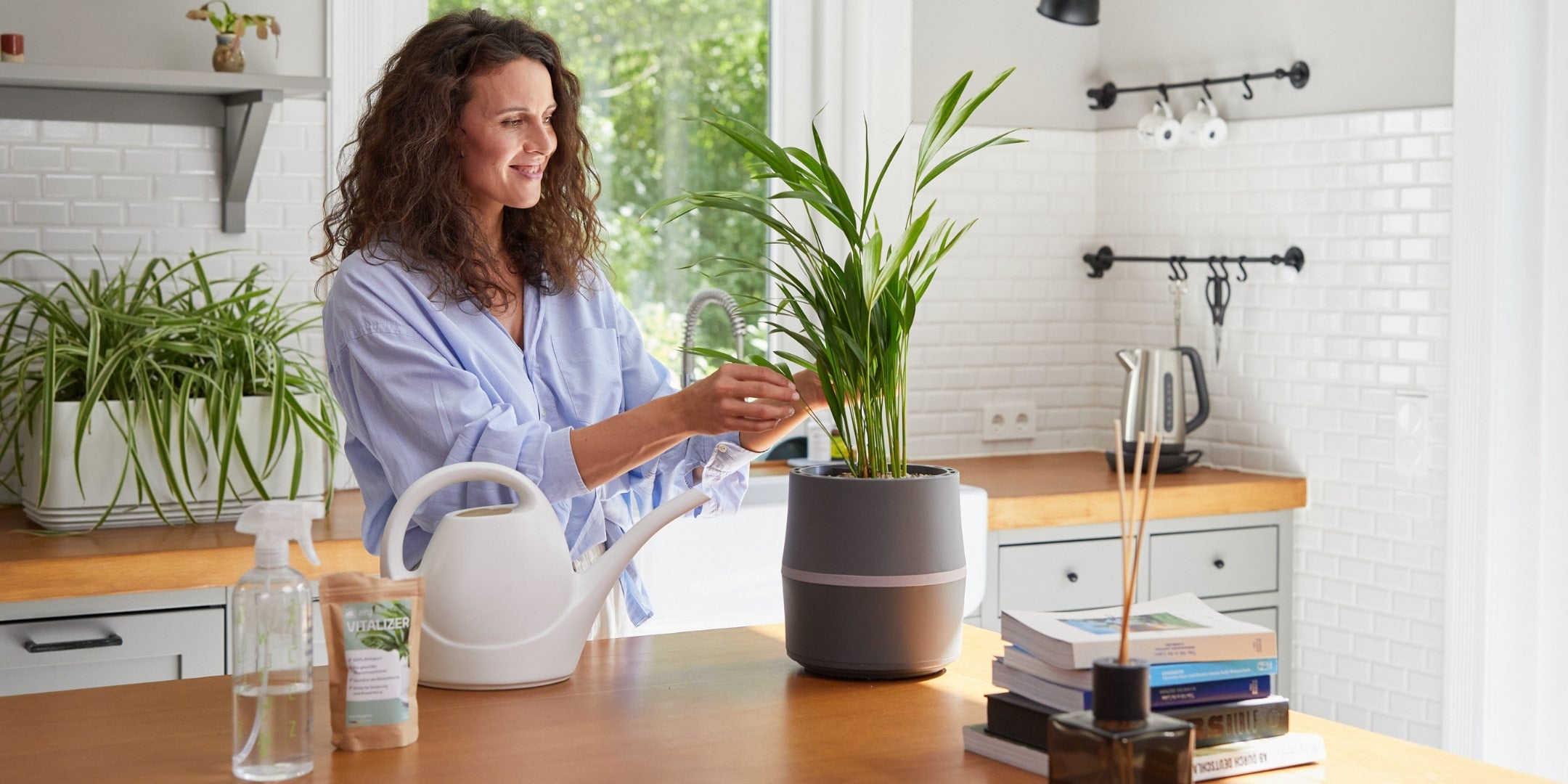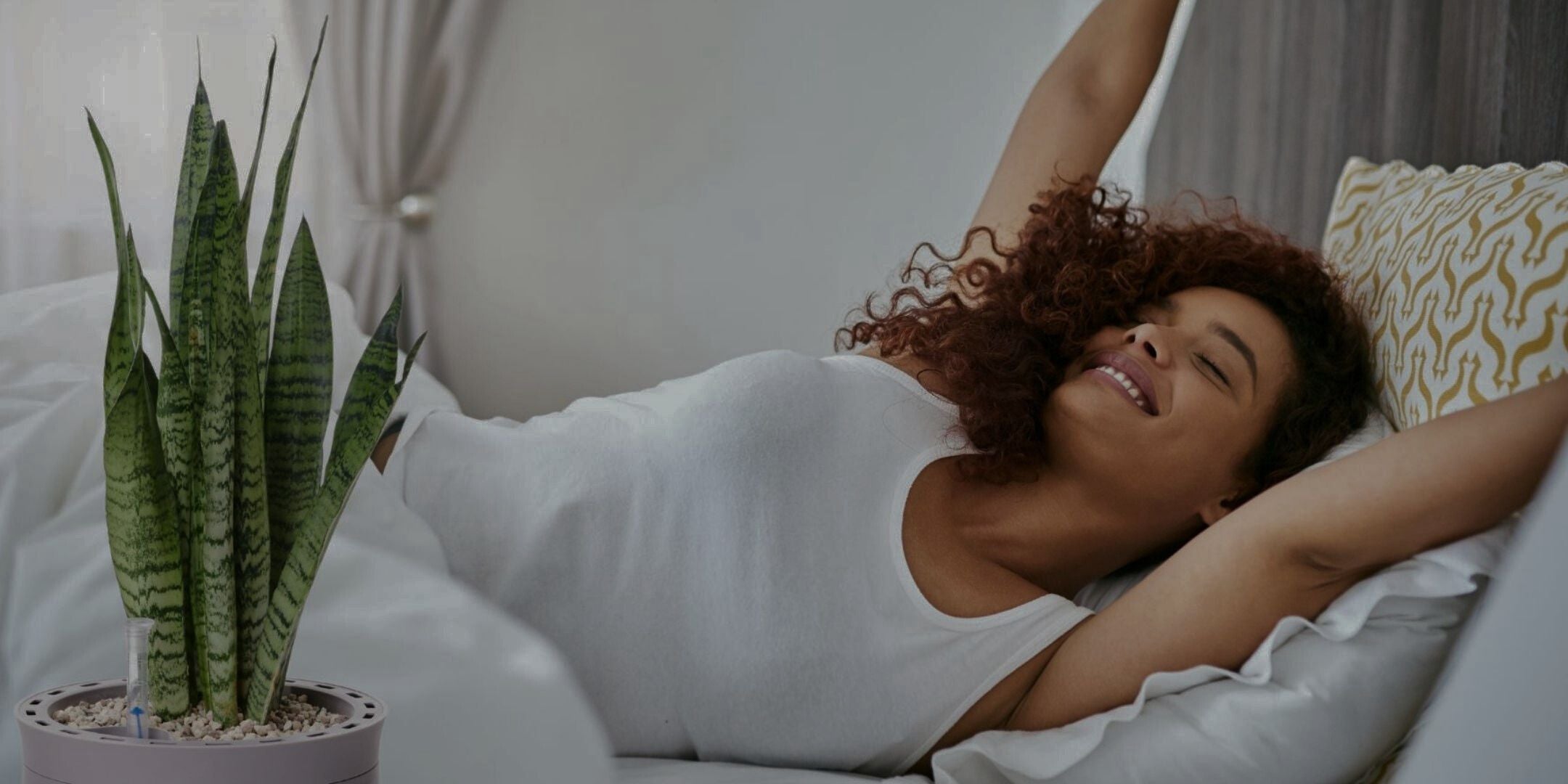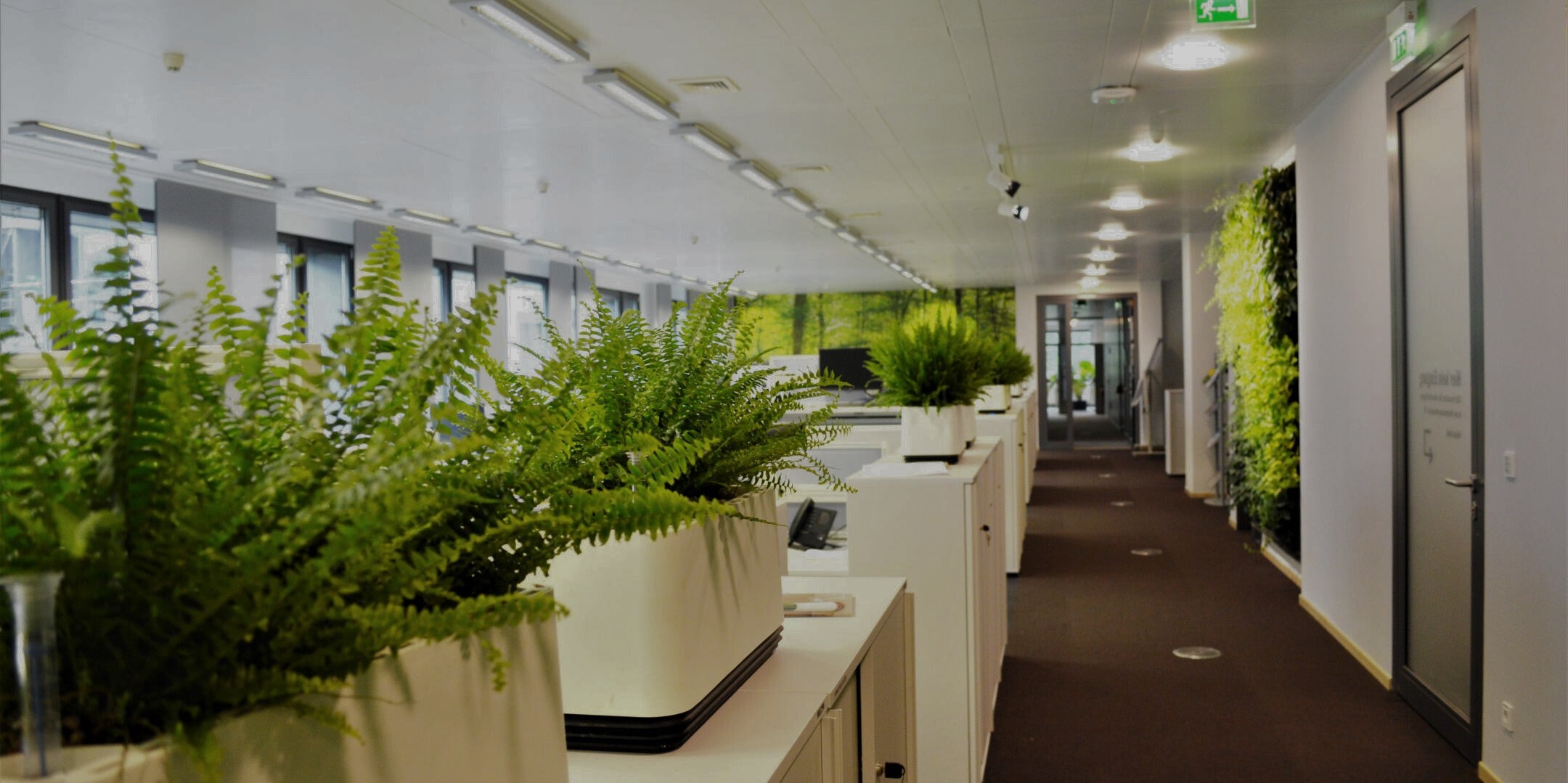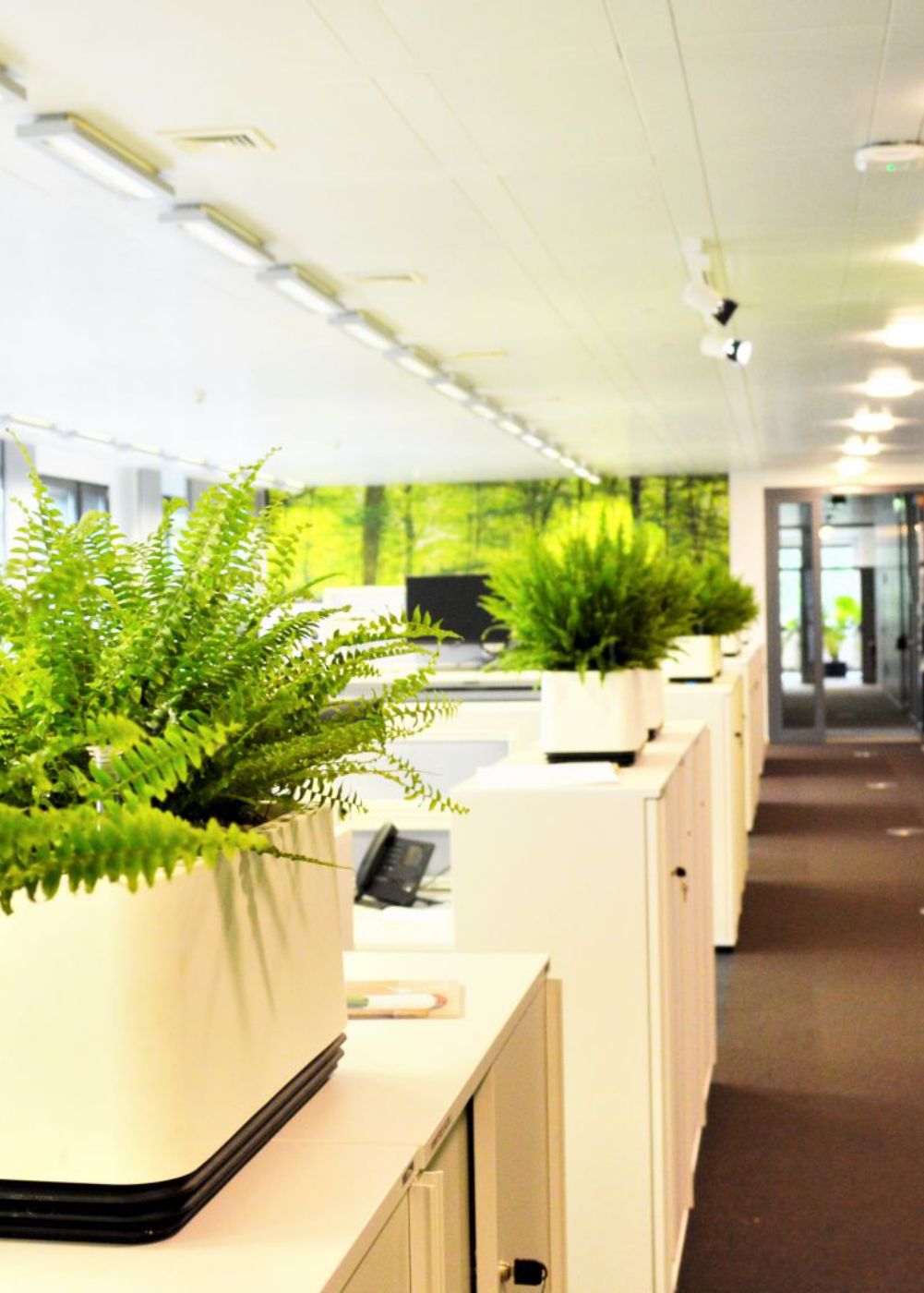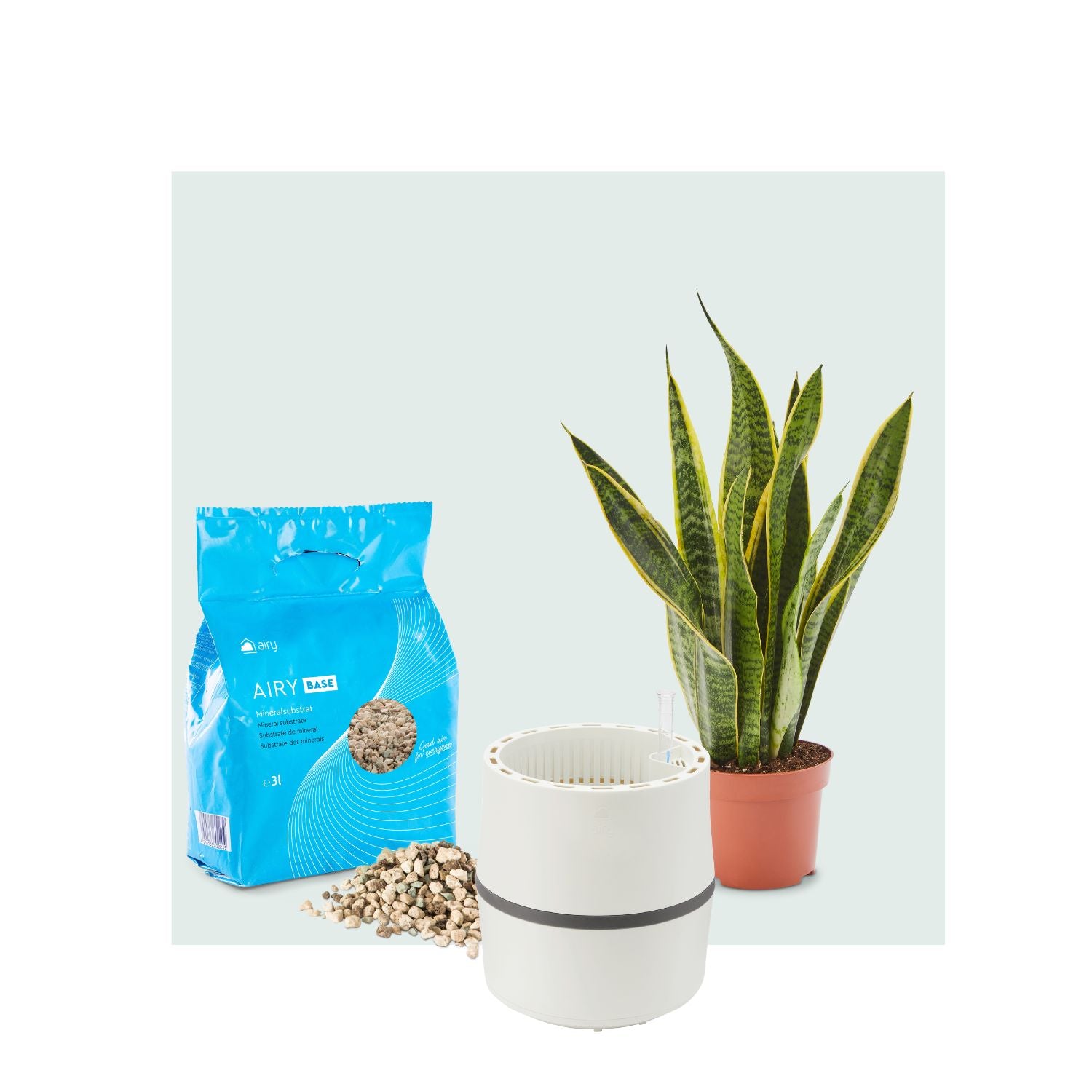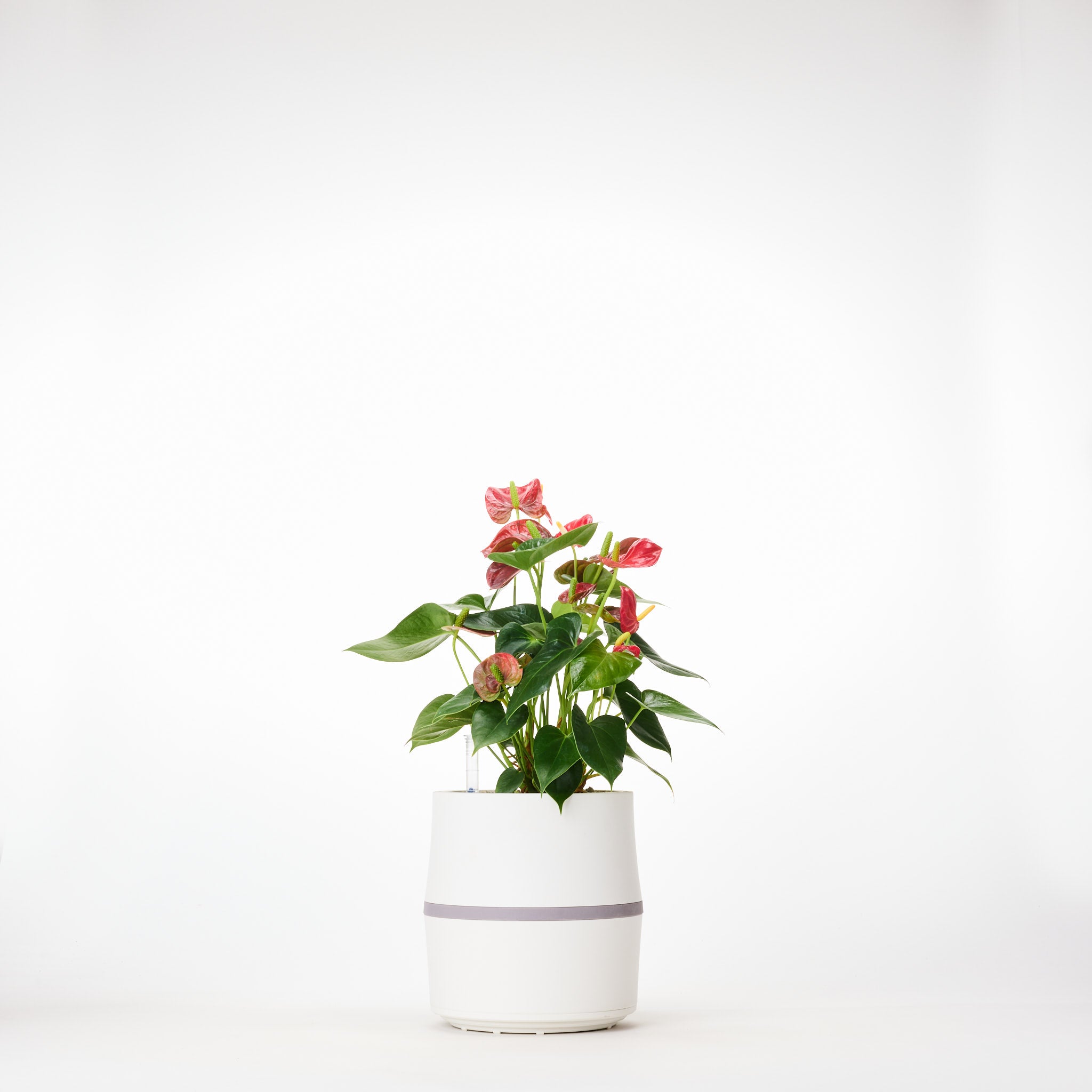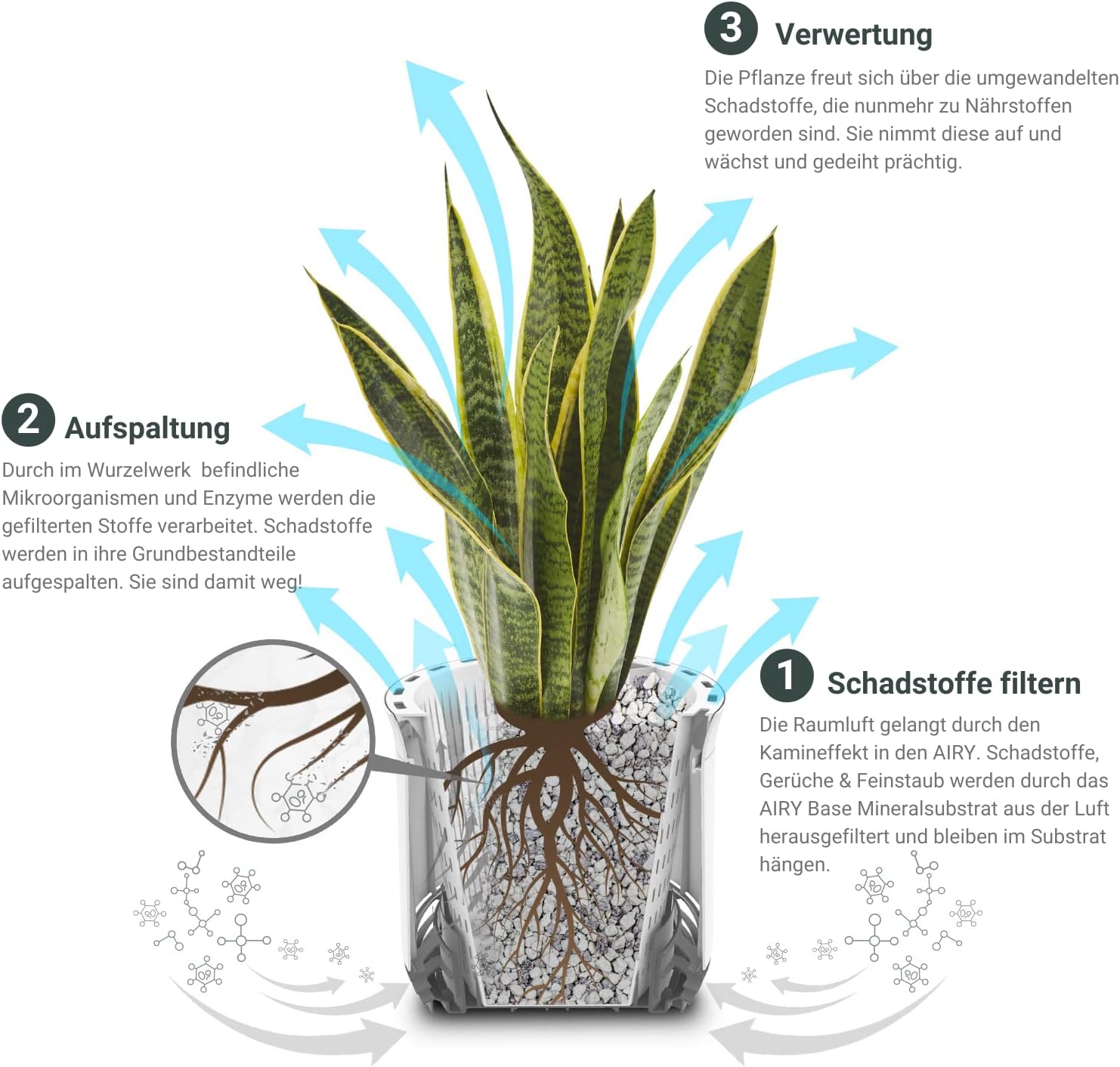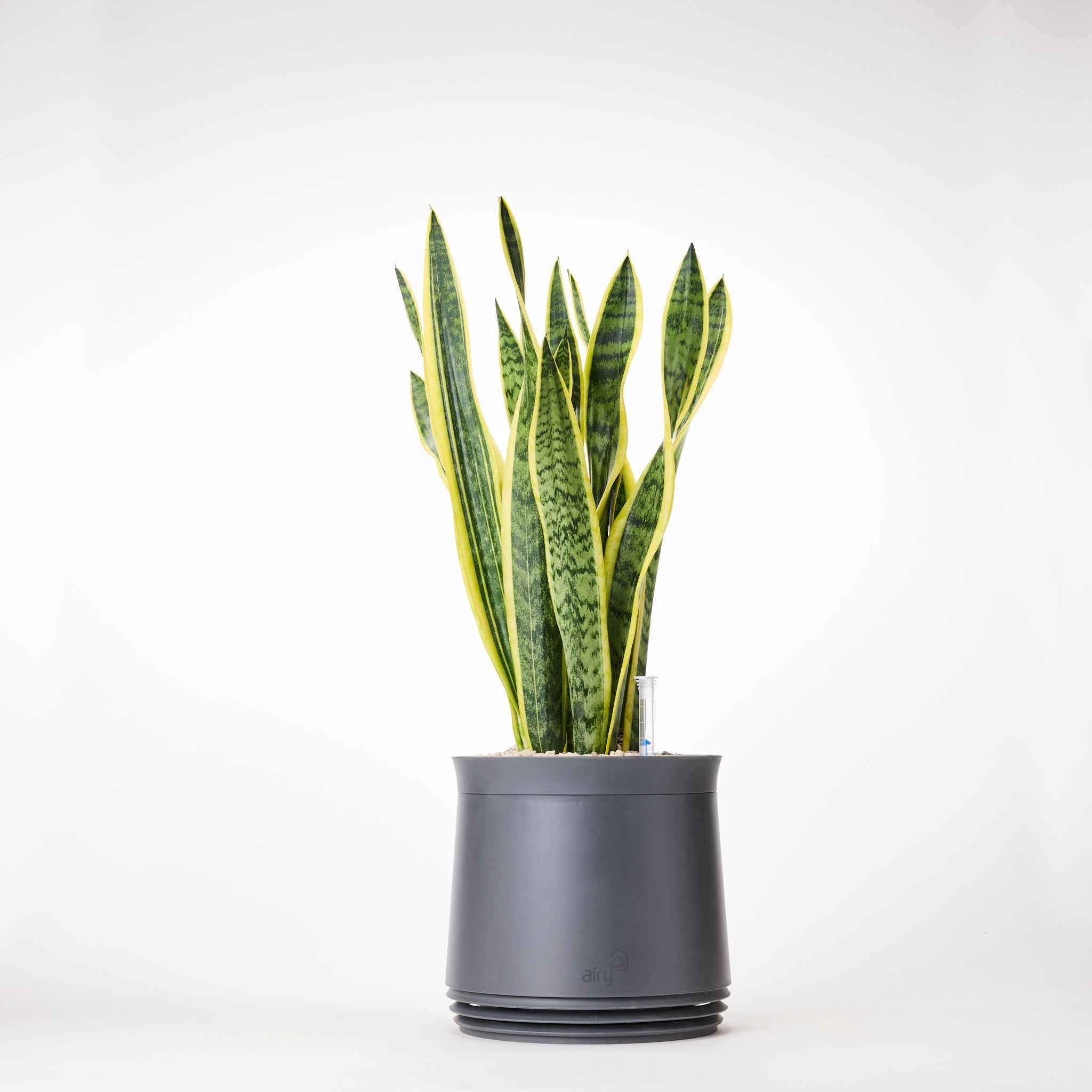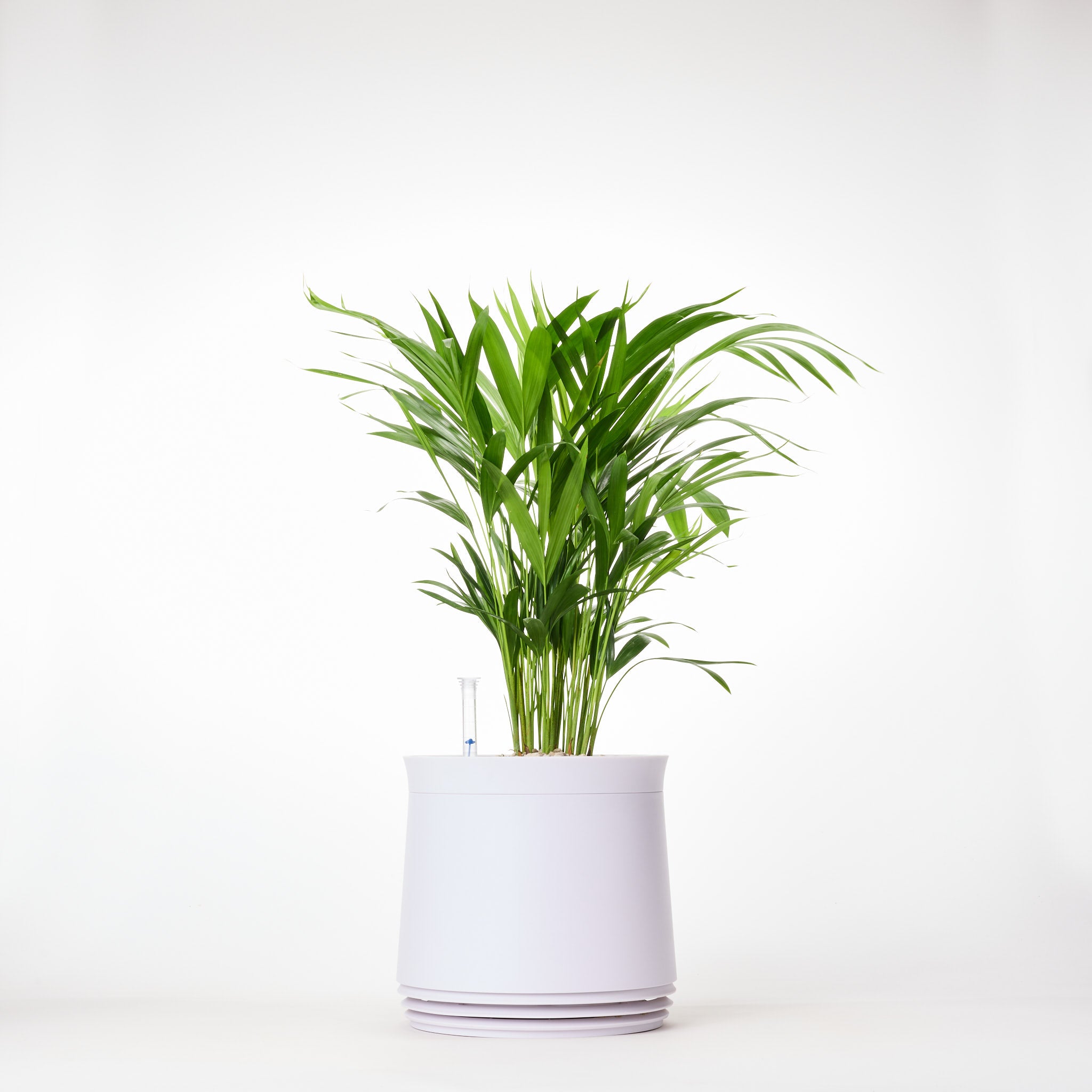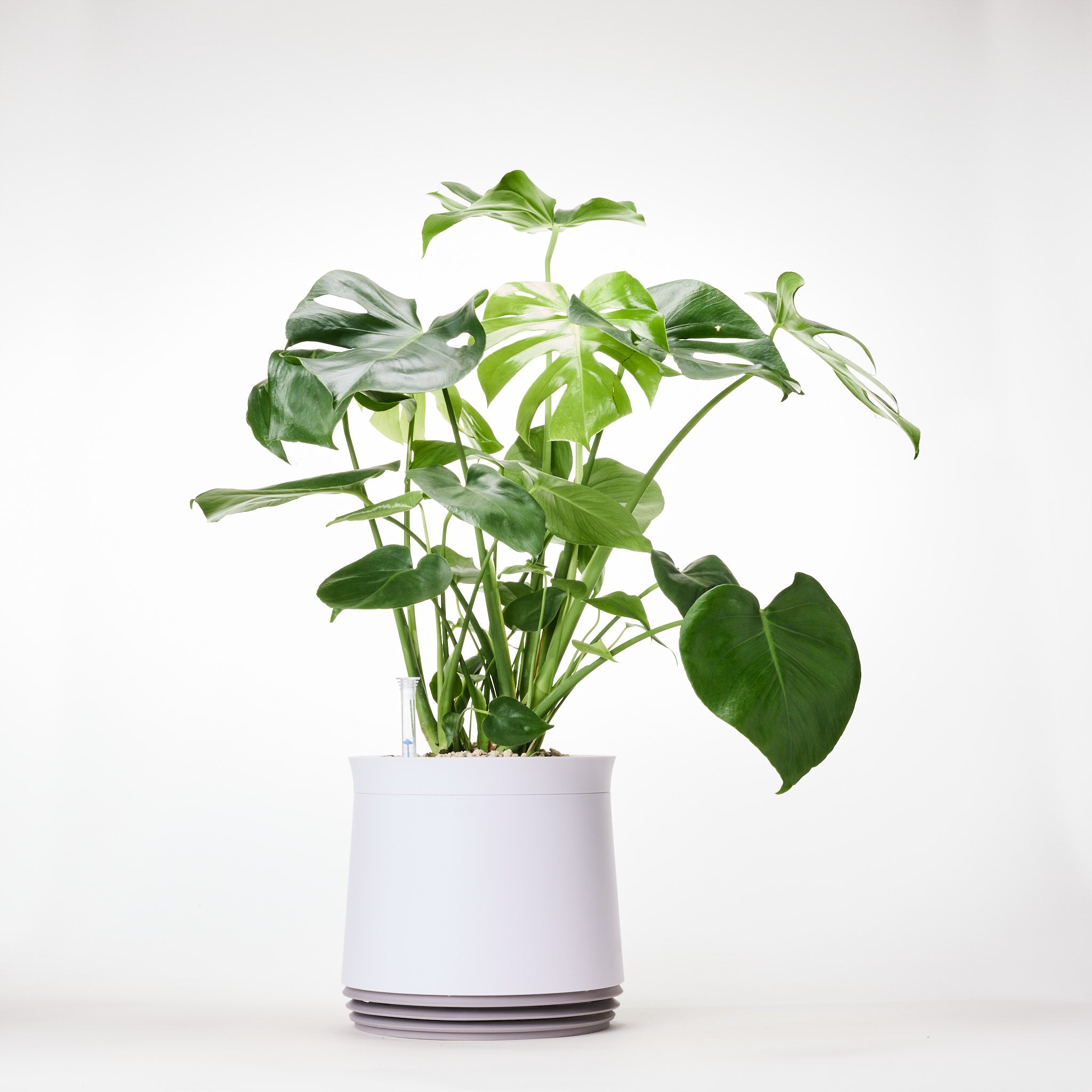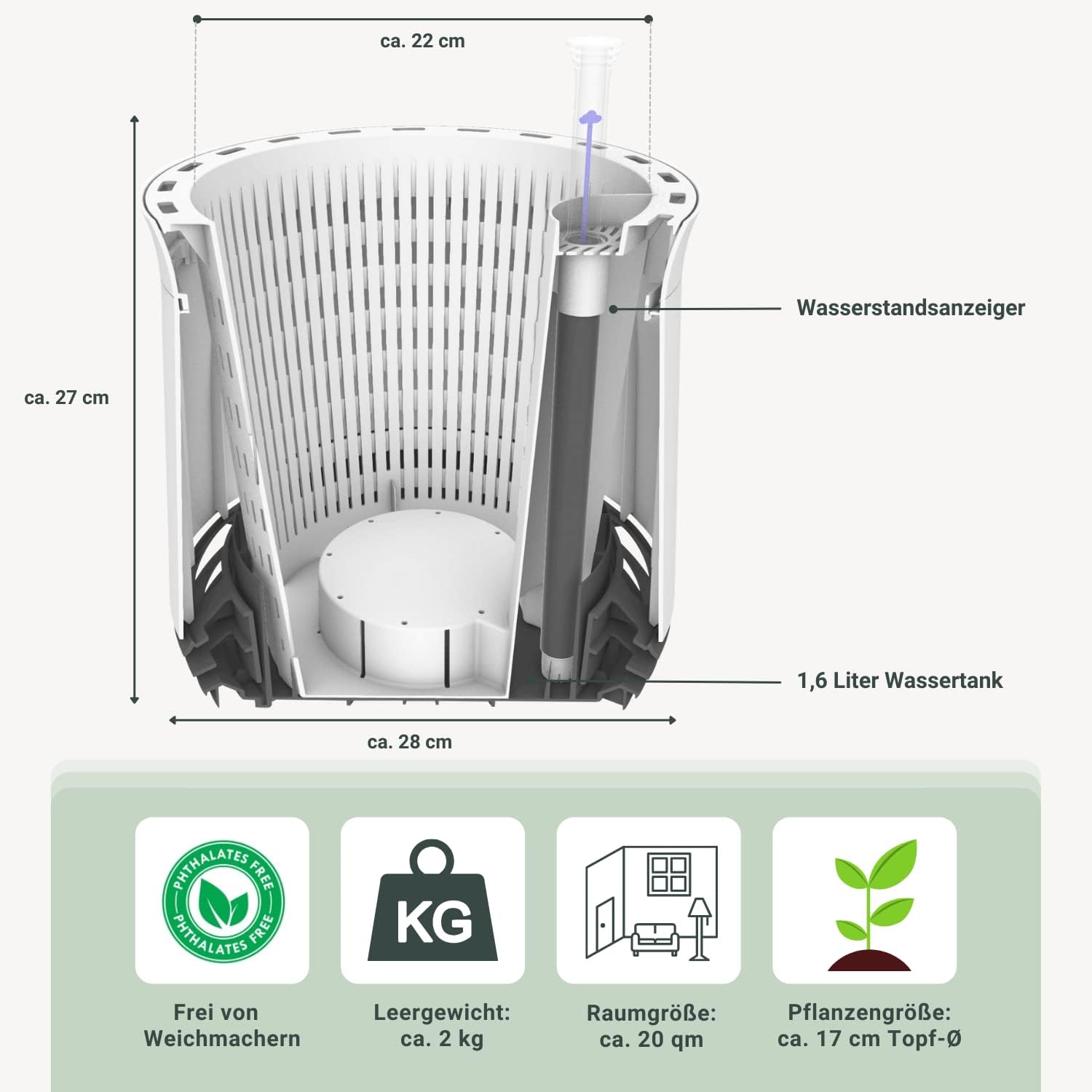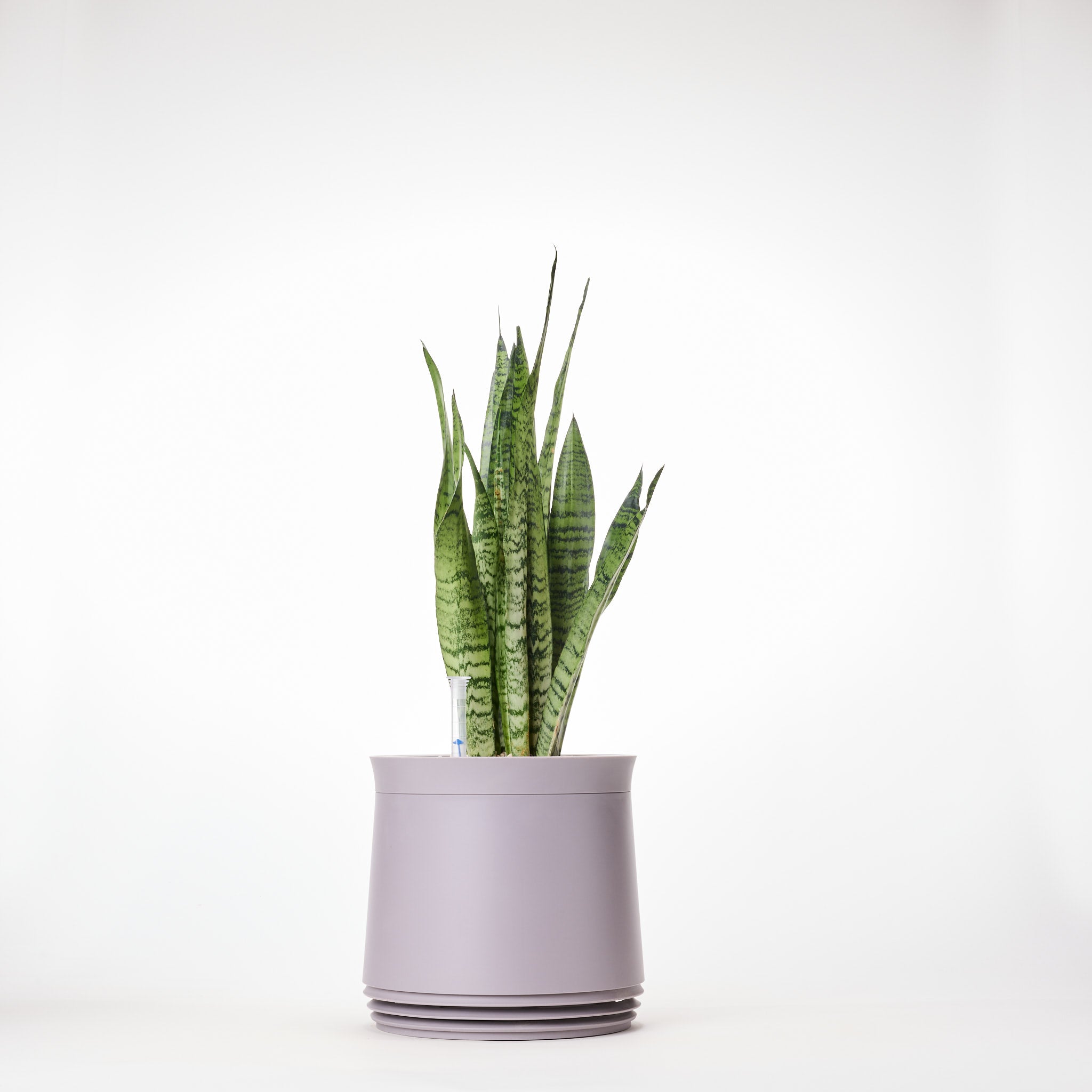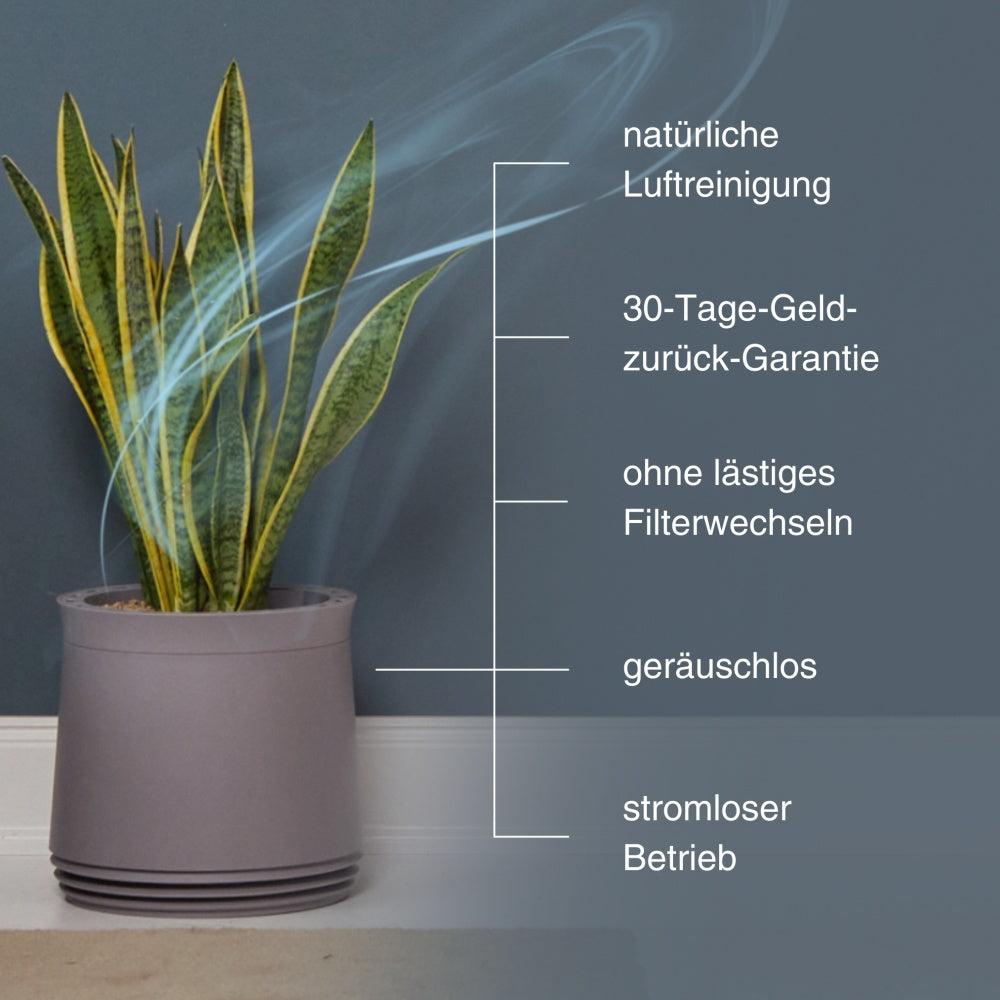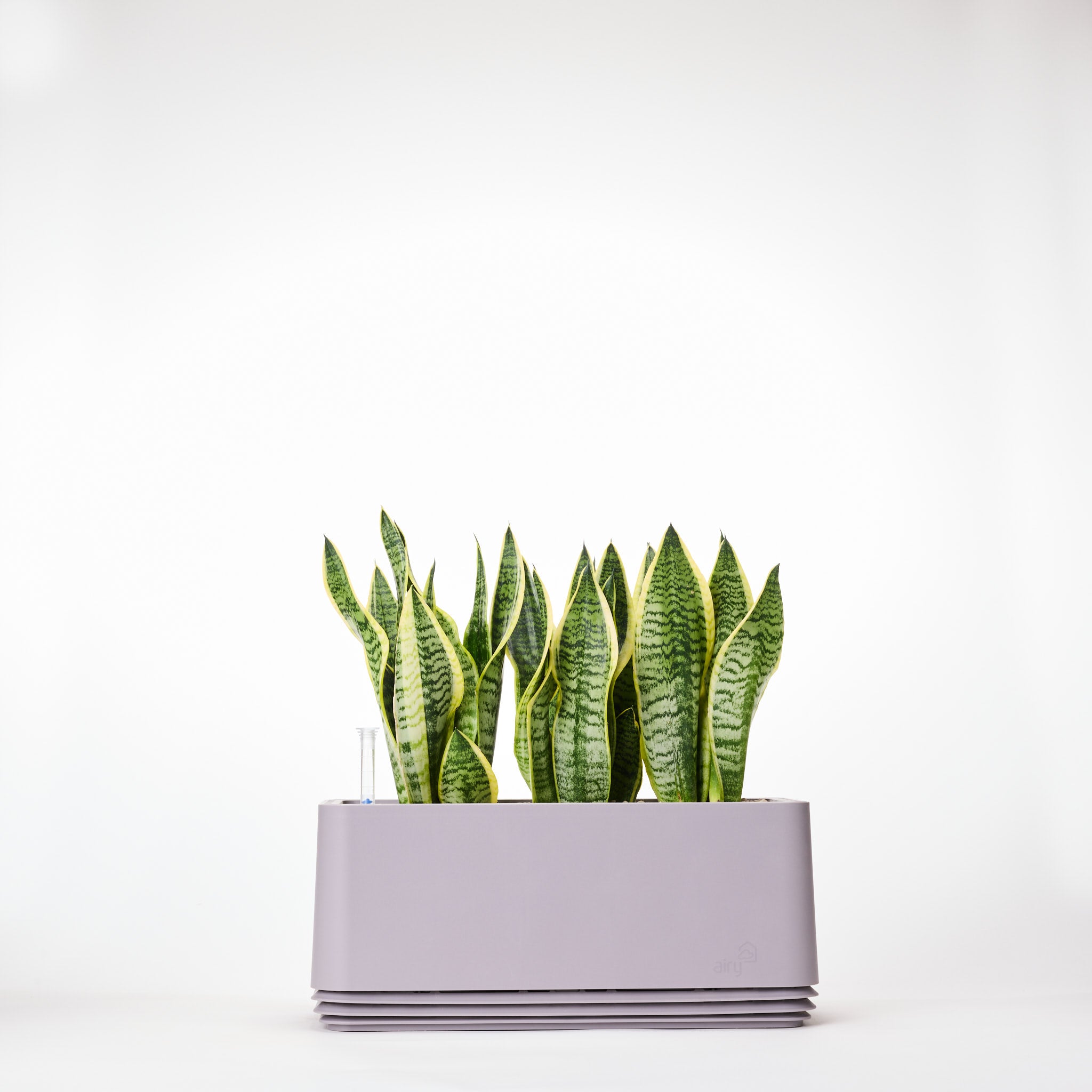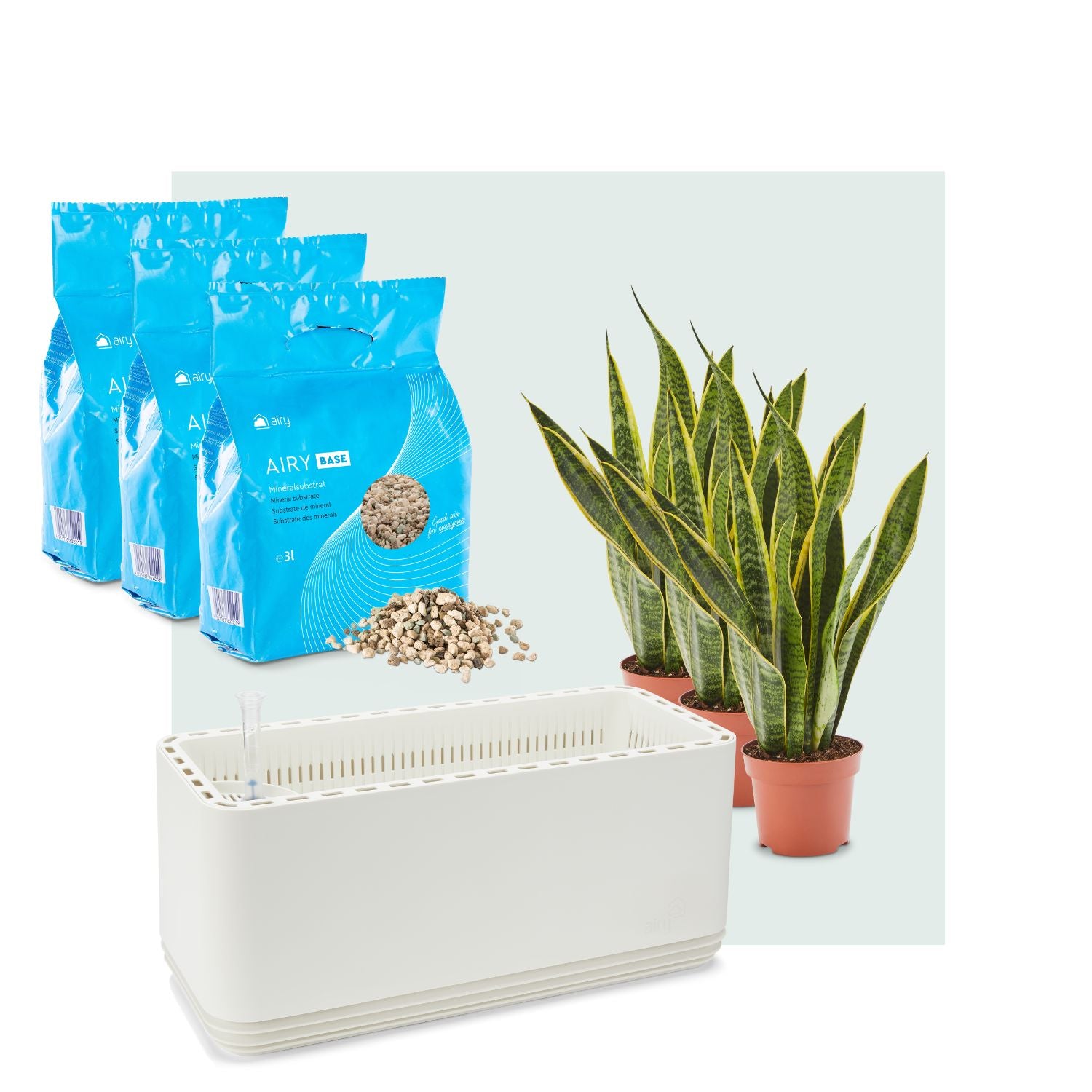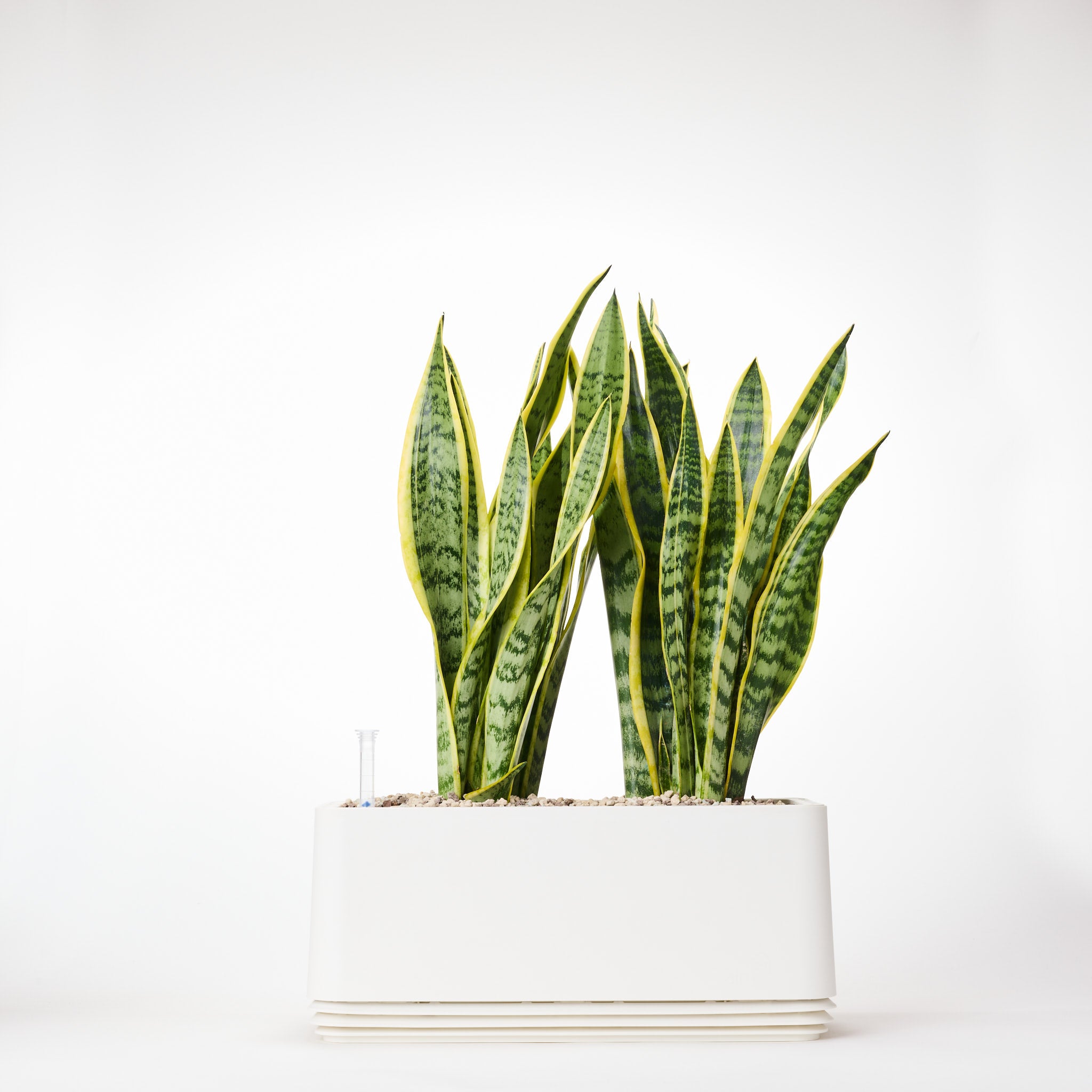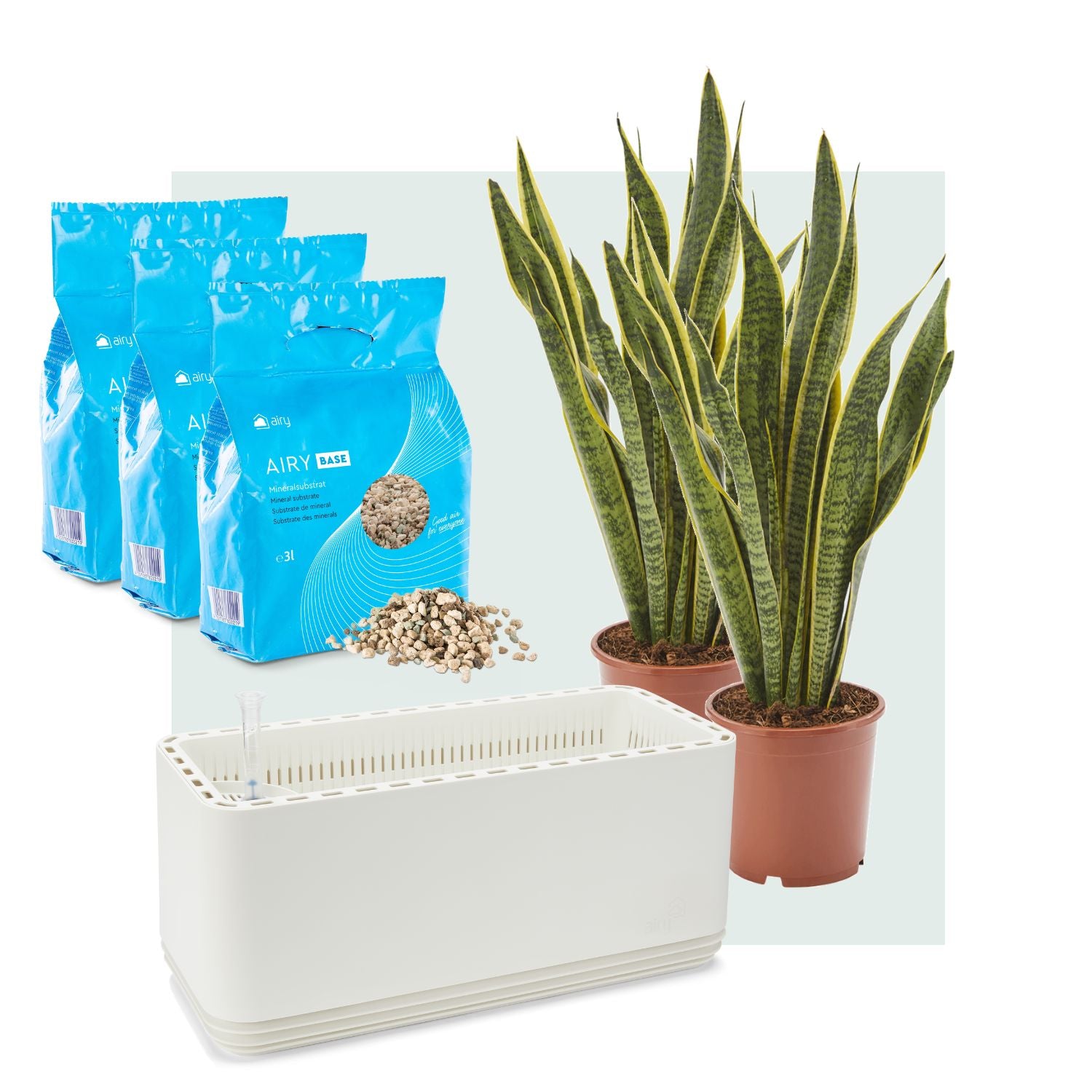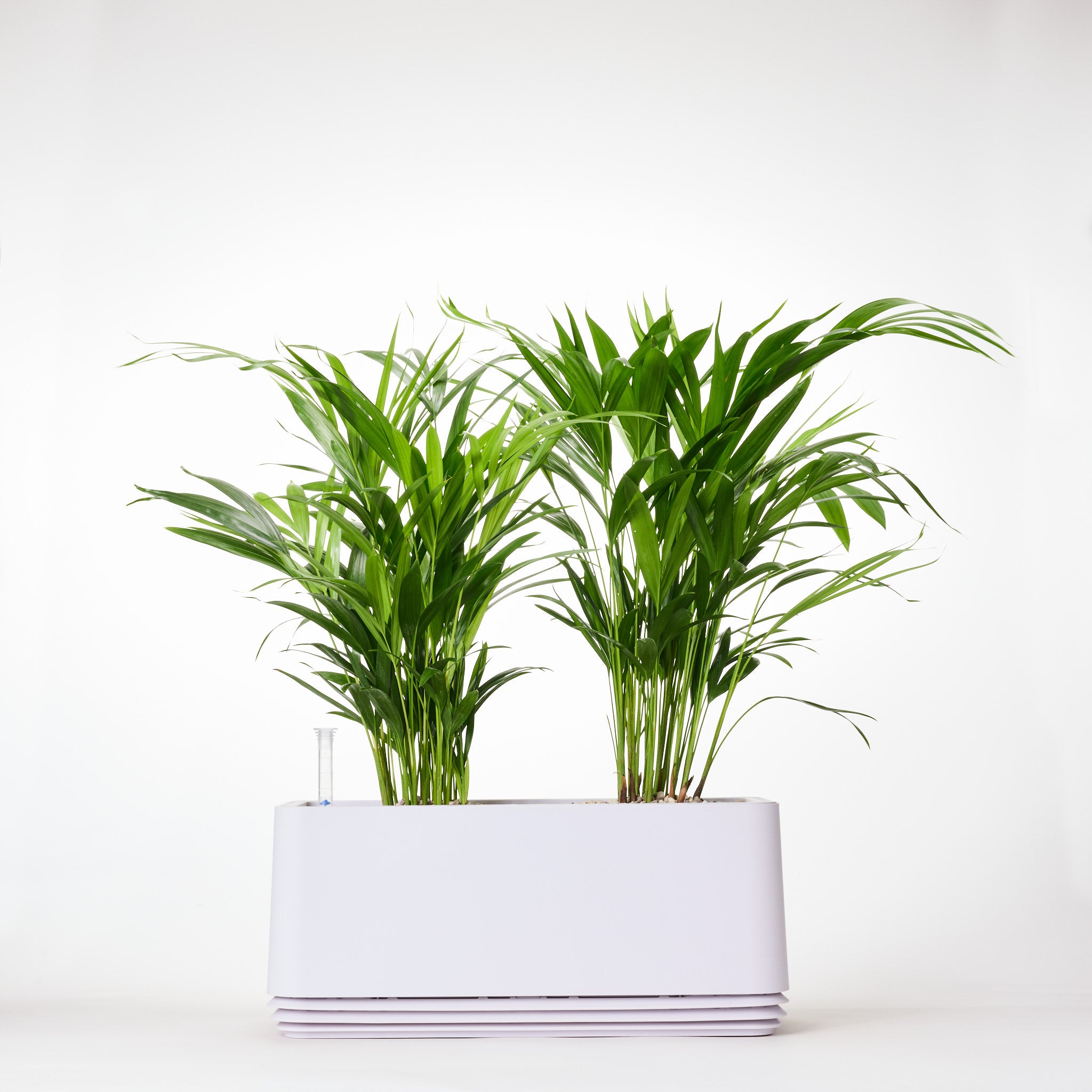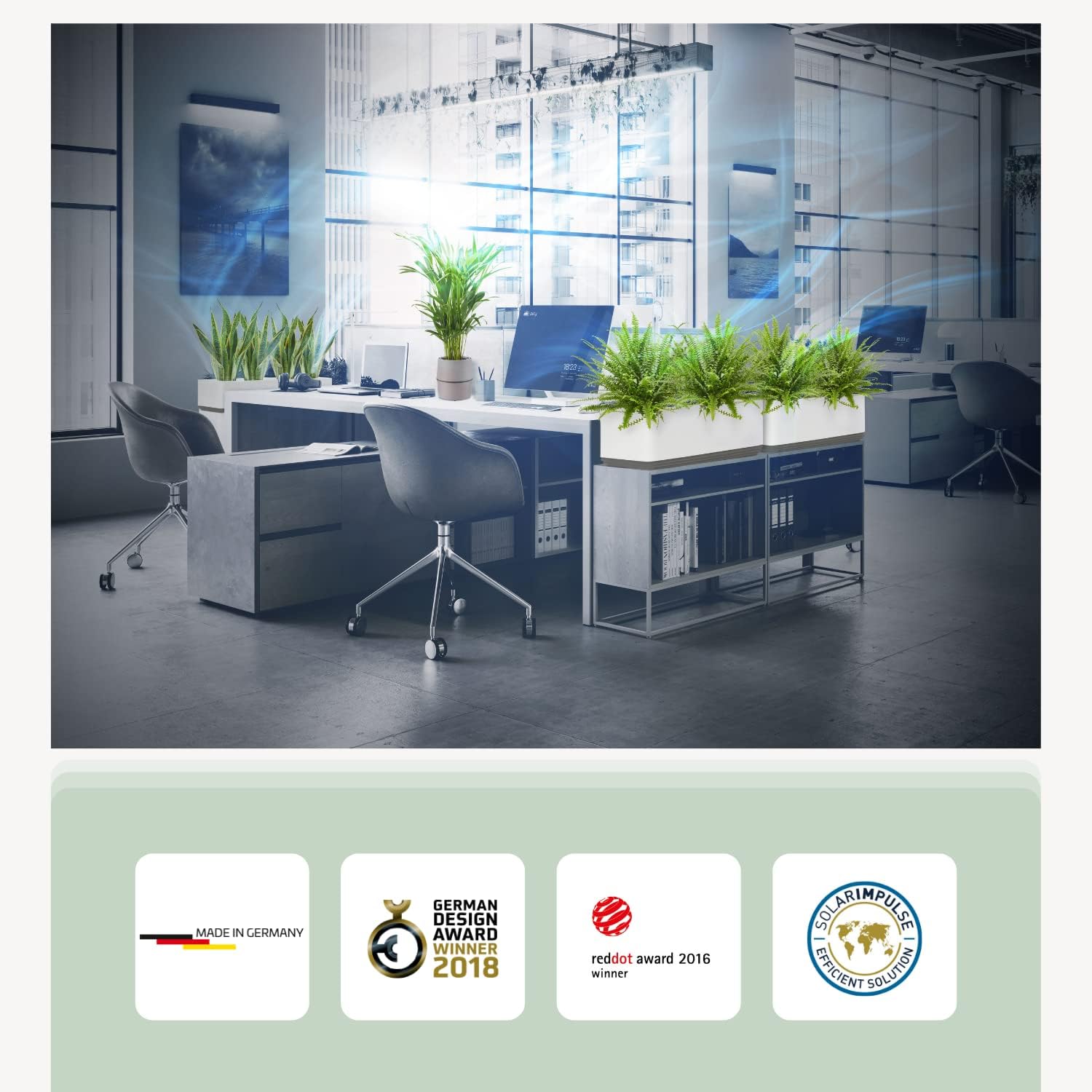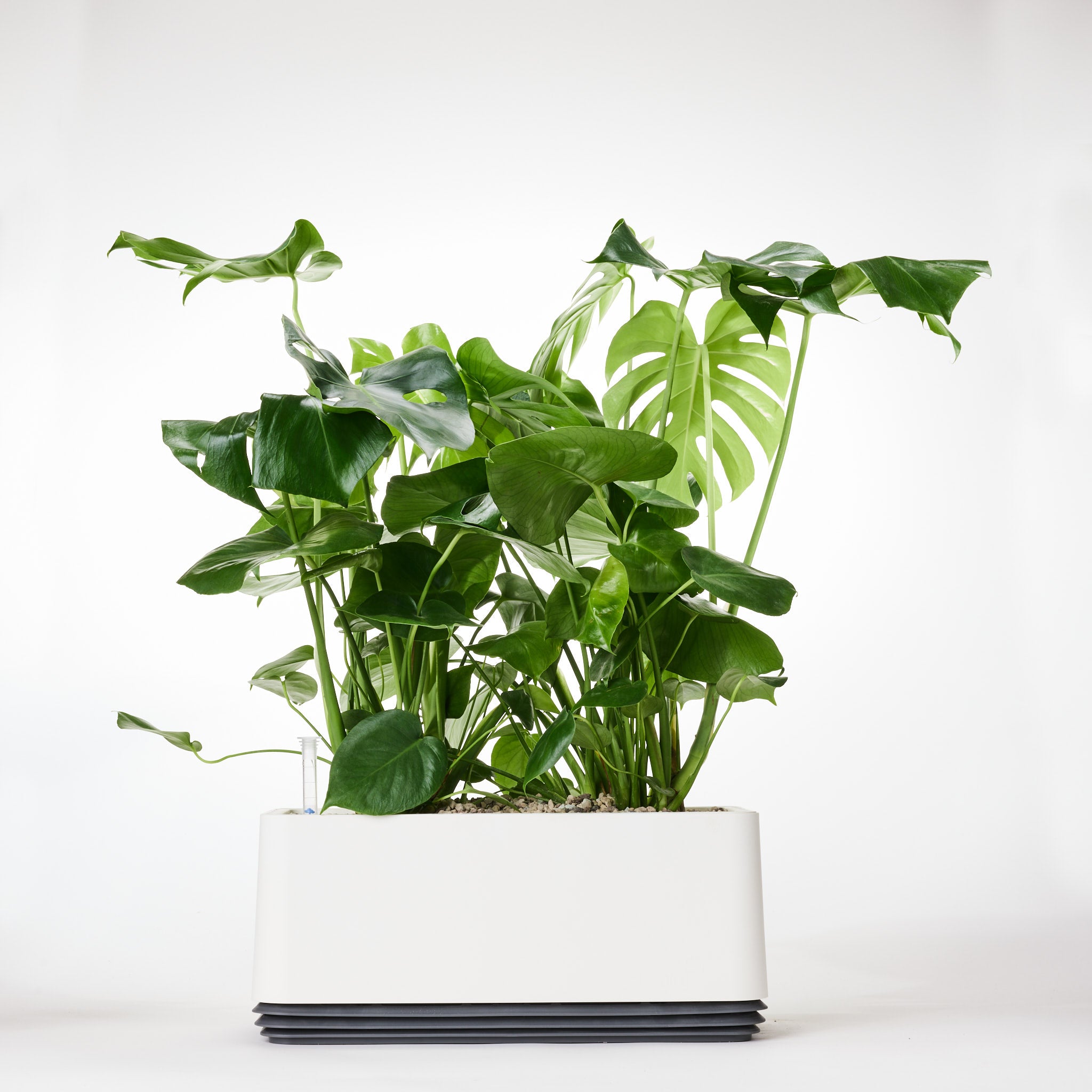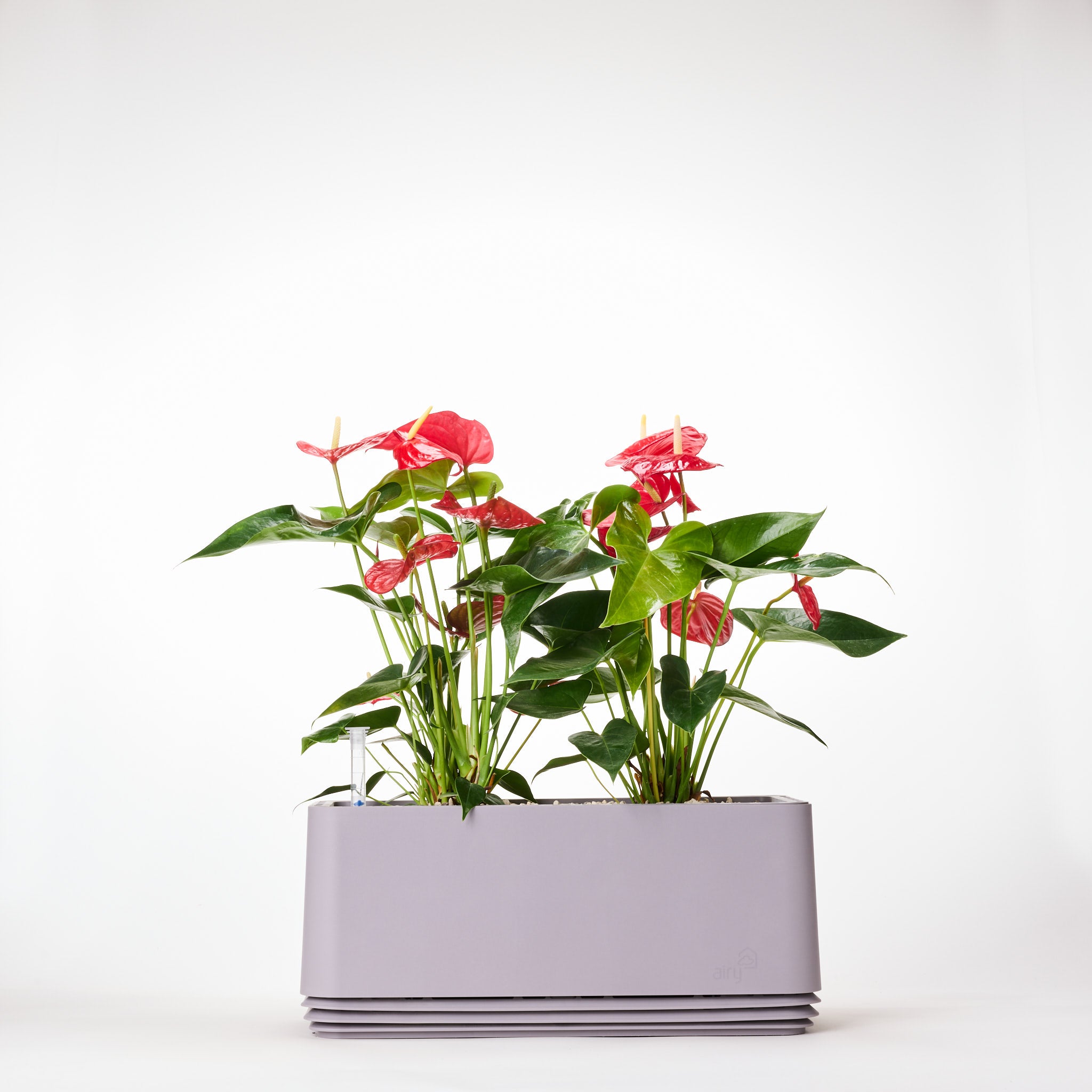











For rooms up to 10sqm
Small AIRY with plant
For rooms up to 20sqm
Medium AIRY with plant
For rooms up to 30sqm
Large AIRY with plants
So funktioniert AIRY

The AIRY's special design creates a chimney effect. Room air flows through the inner pot – without electricity or disturbing noise.

The mineral substrate in the inner pot binds pollutants like formaldehyde and benzene. This ensures clean air, less irritation, and better sleep.

The plant converts the pollutants into vital nutrients without leaving any residue. It grows and thrives—and becomes increasingly more productive over time.

Thanks to the clever irrigation system, your plant will stay supplied for up to three weeks – without daily watering. A green home has never been easier!
One system, many advantages
What does AIRY do for me?
Better air quality
The AIRY biofilter absorbs harmful gases and odors.
Optimal humidity
The plant ensures your perfect feel-good climate.
Performance around the clock
Of course without electricity, annoying noises or expensive filter changes.
Green thumb
The water level indicator shows you when you need to water. And you'll never have to repot again!
Easy to care for plants
Air-purifying plants essentially feed on air and love. And water.
Natural atmosphere
Plants have a calming effect on our psyche. Without electricity, annoying noises or expensive filter changes.
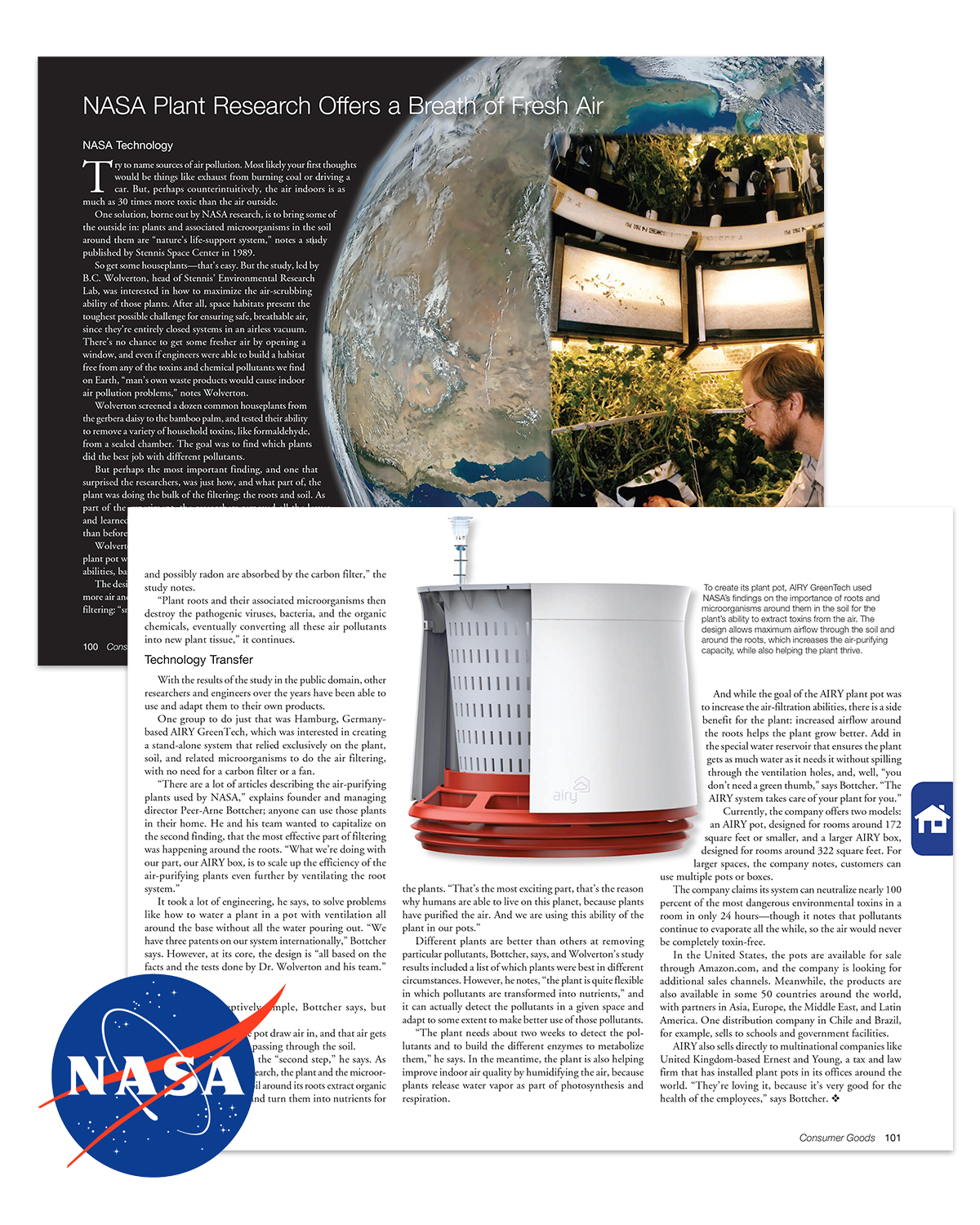
EFFECT SCIENTIFICALLY PROVEN
AIRY IN THE NASA YEARBOOK (2019)
"In the 1980s, researcher W.C. Wolverton from the Stennis Space Center studied how to maximize the potential of houseplants for air purification. He found that the roots of the plants and the associated microorganisms in the soil did most of the work, not the leaves of the plants. AIRY, a company based in Hamburg, has designed plant pots based on this research that maximize airflow through the soil and roots to enhance air filtration and improve plant health."
(Translated quote from the official NASA website: https://spinoff.nasa.gov/Spinoff2019/cg_7.html)

